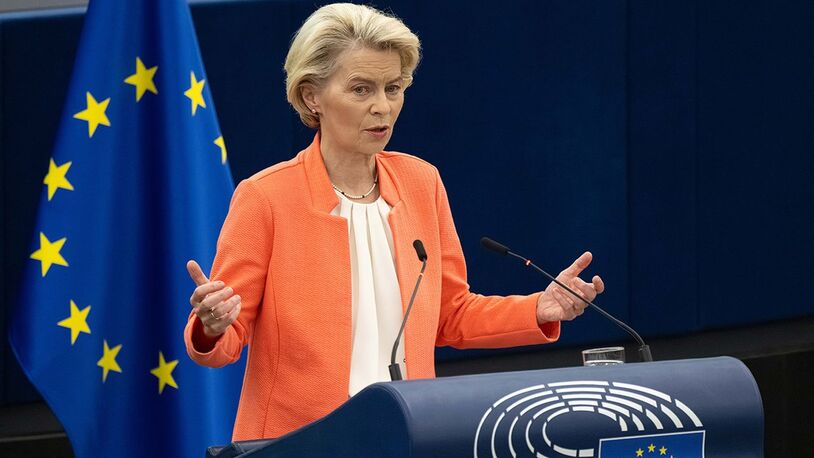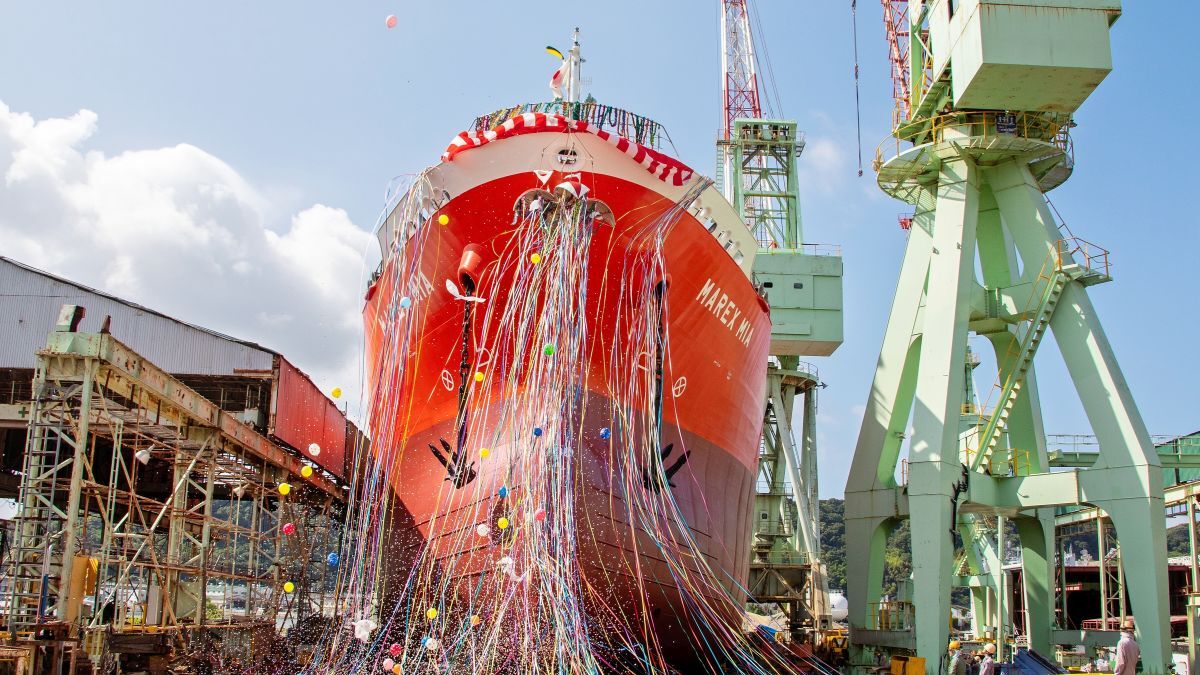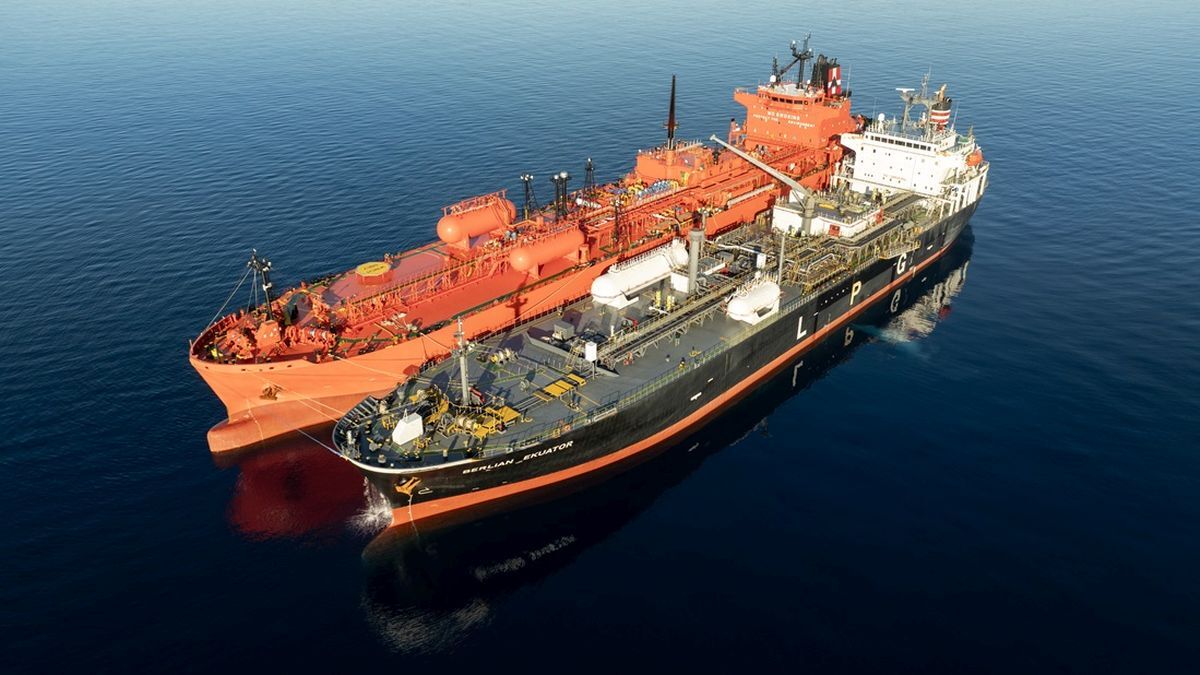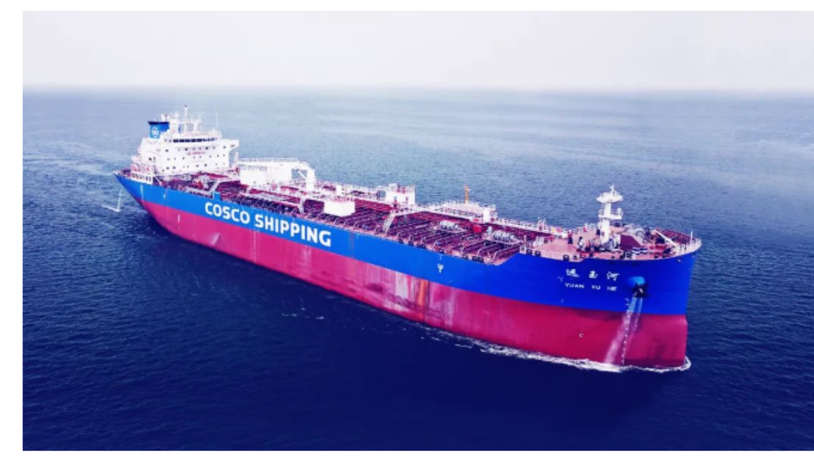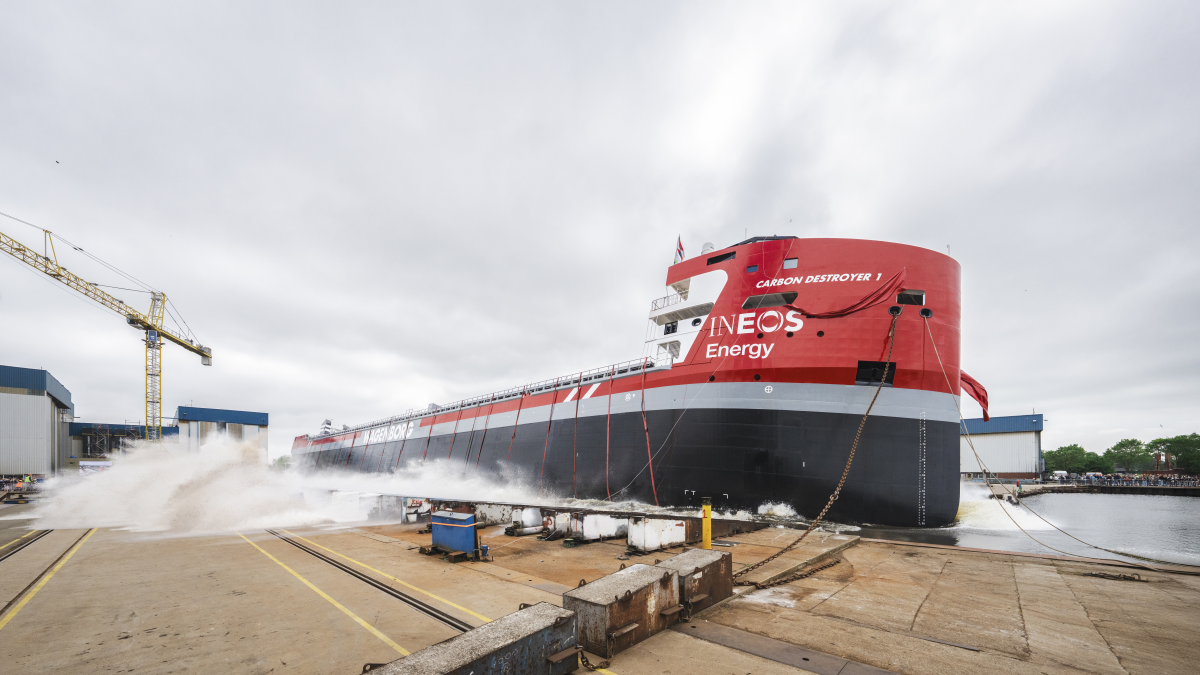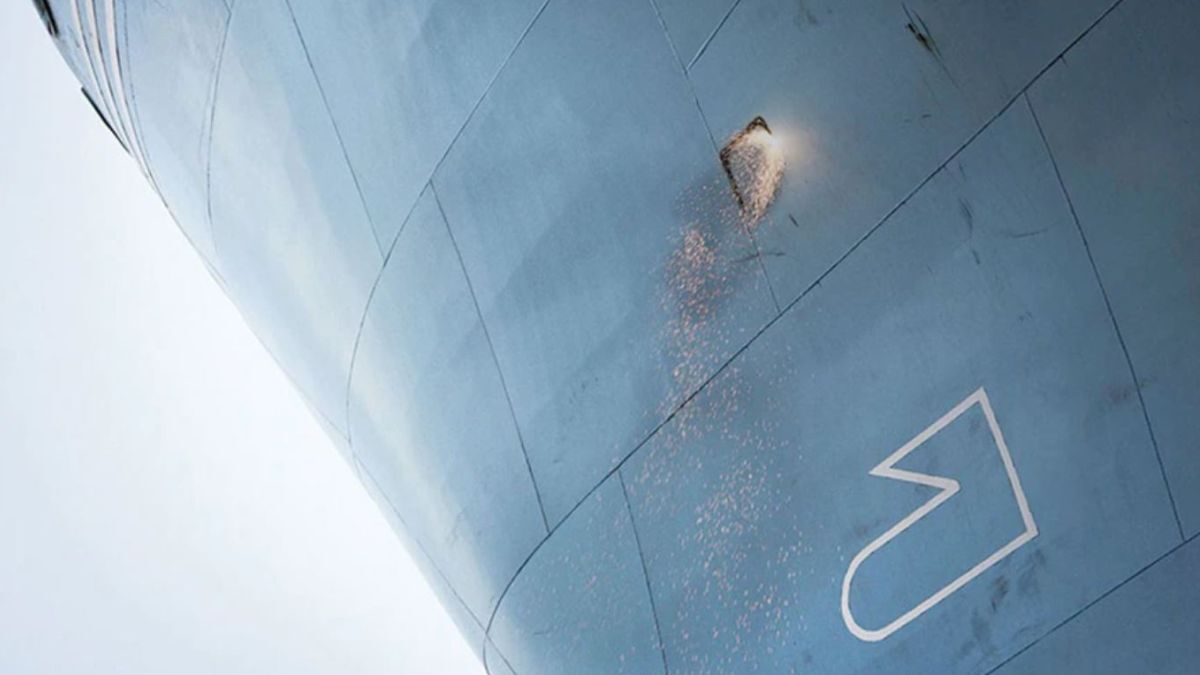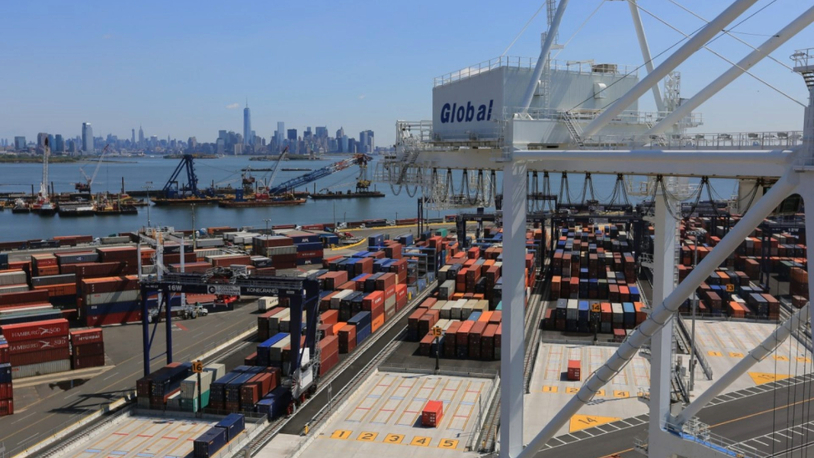Business Sectors
Contents
Alternative fuels are an option for increasing tanker efficiency
Classification societies are at the forefront of designing tanker concepts and technology research. They continue to provide the ideas for the next generation of fuel-efficient, environmentally friendly vessels. Class is developing rules for using alternative fuels, such as LNG, and promoting methods for shipowners to meet IMO’s upcoming Energy Efficiency Design Index (EEDI) regulations. As tanker owners look to reduce fuel consumption, innovative designs involving sails and air bubbles to reduce hull friction have become more promising.
Last year Det Norske Veritas was promoting its Triality crude tanker concept: an LNG-fuelled very large crude carrier that does not need a ballast water system, but does have equipment for recycling volatile organic compounds. This year, the class society hopes the concept of LNG-fuelled tankers will be accepted by the industry. DNV’s tanker segment director Jan Koran thinks designers and shipowners will consider more innovative concepts along with hull optimisation because of forthcoming EEDI and Marpol regulations.
“Triality was a conceptual study. It represents out-of-the-box thinking. It is a concept that may never be built, but will indicate the future direction of tanker designs,” Mr Koran says. In his view, shipowners have been too conservative in the past. “But maybe now that new regulations are coming, it is not business as usual anymore, and this is driving innovation. The big issue now is reducing greenhouse gas emissions through EEDI, which is essentially grams of CO2 emitted per tonne mile,” he says.
Mr Koran adds: “We can specialise in studying hydrodynamics of the vessel and improving engine efficiency to reduce fuel consumption. We are looking at hull lines, bow bulbs, propellers, rudders and hydrodynamics. It is important to harmonise all of this and take a holistic approach to get an optimised ship design.” The tanker segment director says that owners ordering new tonnage for delivery in 2014 need to look another 10 years ahead: “When their tankers are 10 years old there will be ships around that are 30 per cent more fuel efficient”. Owners will have to make a choice about what they expect the market will be like for less efficient ships, especially if charterers want a green profile, Mr Koran says. “By using LNG as a fuel, shipowners can reduce CO2 emissions by 20 per cent over fuel oil. They will be keen to consider innovations to stay ahead of the pack and others will follow them when they see the benefits. Shipyards are starting to see that they will be in a better market position if they offer more energy efficient ships.”
Italian class society RINA is another advocate of LNG fuel for tankers and has developed rules for LNG use, says head of technical services Dino Cervetto. “The rules clarify some important aspects related to the arrangement of machinery spaces containing gas-fuelled engines and fuel tanks, the protection of these spaces, the gas storage and relevant ventilation aspects, the control monitoring, and safety systems,” he says.
“LNG is the most popular and widely considered of alternative fuels. It would be a good solution, but there are problems with logistics of the supply of fuel and the volume of LNG carriage. Ships would need much more storage space than for fuel oil. There are also technical aspects to the management of LNG on board as LNG passes from tanks as a liquid into a gas for the engines. The tanks need to be double-walled and the pipes need to be protected. There are also technical issues with reheating LNG,” Mr Cervetto explains. Those technical aspects are some of the ones that RINA is studying. The class society is also carrying out studies to find the ultimate optimised draft and trim for “a significant number of ships. It is done on a theoretical basis, but we are calibrating the results with model testing. We are talking about reducing fuel consumption by 3-5 per cent and cutting operating costs,” Mr Cervetto says.
ABS has developed guidelines for propulsion and auxiliary systems for LNG-fuelled shipping. It provides criteria for the arrangement, construction, installation and operation of machinery. ABS sought to minimise operating risks and promote the protection of vessels and crew. Information for the guide came from ABS’s research with Daewoo Shipbuilding & Marine Engineering and AP Moller-Maersk. “It is a matter of when, not if, LNG will be a commonly selected fuel source, and as such we need a sound basis for ship design,” says ABS president and chief executive Christopher Wiernicki.
“This is an opportunity to offer advances in ship design on a scale that has not been experienced in quite some time. But we must always recognise that with technological advances we may be trading off one risk for another. Safety must be integrated and aligned throughout the entire lifecycle of a project. Designers will have to find a solution that improves efficiencies while maintaining the safety of the vessel, its crew and the environment. They must strive to find the innovations that push the frontier without putting safety at risk,” says Mr Wiernicki.
Germanischer Lloyd is working on projects involving gas-fuelled ships. It is a partner in the joint projects GasPax, BunGas and Helios, which are developing safe gas-fuelled vessel solutions and studying refuelling requirements. It also assisted Wärtsilä in converting Tarbit Shipping’s chemical tanker Bit Viking into the world’s first tanker to run on LNG. GL-classed Bit Viking was converted between August and October 2011 using GL’s rules. GL staff monitored the manufacture and installation of the components, including piping, valves, safety equipment and LNG tanks, says GL’s operating officer Torstein Schramm.
“Bit Viking was a challenging project. The internal and surface equipment had to be constructed with the correct materials and the right quality of welds. Special attention was paid to the bunkering system and how this would be performed: it was a critical operation because of the low temperatures. Bit Viking has 90 per cent lower NOx emissions, SO2 is cut entirely and greenhouse gas emissions are cut by 20 per cent,” he explains.
GL continues developing tanker concept innovations using optimisation software Friendship Framework, in conjunction with ShipFlow, Napa and Poseidon programs. This resulted in the Best Plus Aframax tanker concept, incorporating an optimised hullform, improved cargo capacity, a 16 per cent cut in EEDI, and a thickened double hull to reduce the risk of oil spills.
Mr Schramm says further progress will be made on Best Plus, as it now has a shipbuilding partner and co-operation with China Classification Society. “We have teamed up with a shipyard in China to take this concept further. It will be easier now to find an owner that is willing to consider this design,” he adds.
Lloyd’s Register is researching the use of fuel cells, nuclear power and LNG-fuel. It is co-ordinating with Wärtsilä, the Swedish Transport Agency and the University of Genoa’s Rolls-Royce technology centre on the Methapu project. The aim of the project is to evaluate the use of both solid oxide fuel cell technology and methanol as a means of converting chemical energy into electrical power on ships.
Other work for LR includes classification of the world’s first new LNG-fuelled tanker, 6,100 dwt dual-fuelled chemical tanker Argonon for Deen Shipping. LR is also working with Hyperion Power Generation, BMT Nigel Gee and Greek ship operator Enterprise Shipping & Trade to design a tanker with a nuclear propulsion concept. The design could include a small modular reactor with a thermal power output of more than 68MW. It could be used as plug-in nuclear ‘batteries’ to replace conventional tanker engines.
The consortium expects to produce a concept tanker design by mid-2012. The research includes analysis of hullforms and structural layout, including grounding and collision protection. The concept could include moving the engineroom to the centre of the tanker to reduce the effects of ship motions on the reactor. Lifecycle cost studies will consider leasing of Hyperion’s modular nuclear reactor until the fuel is spent, then replacing it with another one. Hyperion would be responsible for operation and maintenance, removal, decommissioning and recycling of the reactor.
Polish Register of Shipping’s research focuses on pilot tests of low-emission technologies in collaboration with the Maritime University of Szczecin. This will cover the assessment of a prototype plasma-based exhaust treatment system, developed by the university, which may lower NOx emissions. PRS will assess and develop certification criteria and type approval guidelines for low-emission technologies.
The class society is also involved in the EU-funded InnoShip project, looking into safety in the Baltic, and the adoption of innovative low-emission technical solutions. This will create a web-based investment decision support tool and best practice manual for owners and ship designers.
In another project, PRS is studying sloshing phenomenon in partly filled tanks. This includes development and verification of load definition procedures for the critical sections of tanker hull. It is doing comparative calculations using long-term prediction of stress in ship structures using finite element analysis. “The capacity to model stresses and predict tanker structure behaviour due to sloshing could be critical for the determination of safety margins when a small tanker is exposed to severe weather conditions in certain positions in rough seas,” PRS explains.
Meanwhile, Bureau Veritas has developed guidelines for fuel cell use, orientated to newbuildings with a hybrid power system or LNG fuel. There are recommendations covering fire safety, protecting electrical equipment, monitoring and control systems, and materials. There are guides to general arrangement and system design that includes storage and ventilation and fuel sources. BV did risk analysis on a fuel cell system, including studies on equipment failure modes, human errors and failure consequences that feed back into system design and operation.
Another part of these studies was research into sustainable shipping with Maran Tankers, Euronav Ship Management, Maersk Tankers and Wärtsilä. The project is looking at mixed energy use on tankers, including the use of fuel cells, sails and solar panels. These studies will help owners improve energy efficiency and reduce fuel costs.
BV has developed an in-house analysis tool, Seecat, that models energy flows and calculates ship efficiency, says product manager for tankers Yannis Calogeras. “Seecat calculates fuel consumption, NOx, SO2, and CO2 emissions for various ship types. Vessels are modelled using Simulation X software for the energy inputs and outputs. It predicts energy use and looks at how to reduce consumption.”
Design concepts should consider tanker safety
Intertanko is keen to support design concepts with the potential to reduce fuel consumption and emissions, but only if they do not affect ship safety. The industry organisation does not want power reduction to be the only criteria owners and shipyards use to comply with IMO energy efficiency regulations. If designers only consider reducing installed power, then tankers could become unsafe in severe weather conditions, says Intertanko’s technical director Dragos Rauta.
“We hope EEDI will lead to more research and development, lower CO2 emissions and lower operating expenditure. The use of cleaner fuel will mean enginerooms will look very different in the future. Better designs will make ships more high-tech with more operations monitoring and control systems. But EEDI could create under-powered ships and affect manoeuvrability. There are questions of what will happen to an under-powered ship in heavy weather,” Mr Rauta explains.
“Tanker speed should not be the main compliance criteria as it could suffocate other innovative design ideas. Safety should remain paramount. We prefer to see more efficient propulsion systems. There are also questions on the energy used by scrubbers and ballast water treatment systems and how this affects EEDI. We also need to look at the impact of EEDI on twin-screw ships, and chemical and shuttle tankers.”TST
Related to this Story
Events
Offshore Support Journal Conference, Americas 2025
LNG Shipping & Terminals Conference 2025
Vessel Optimisation Webinar Week
© 2024 Riviera Maritime Media Ltd.


